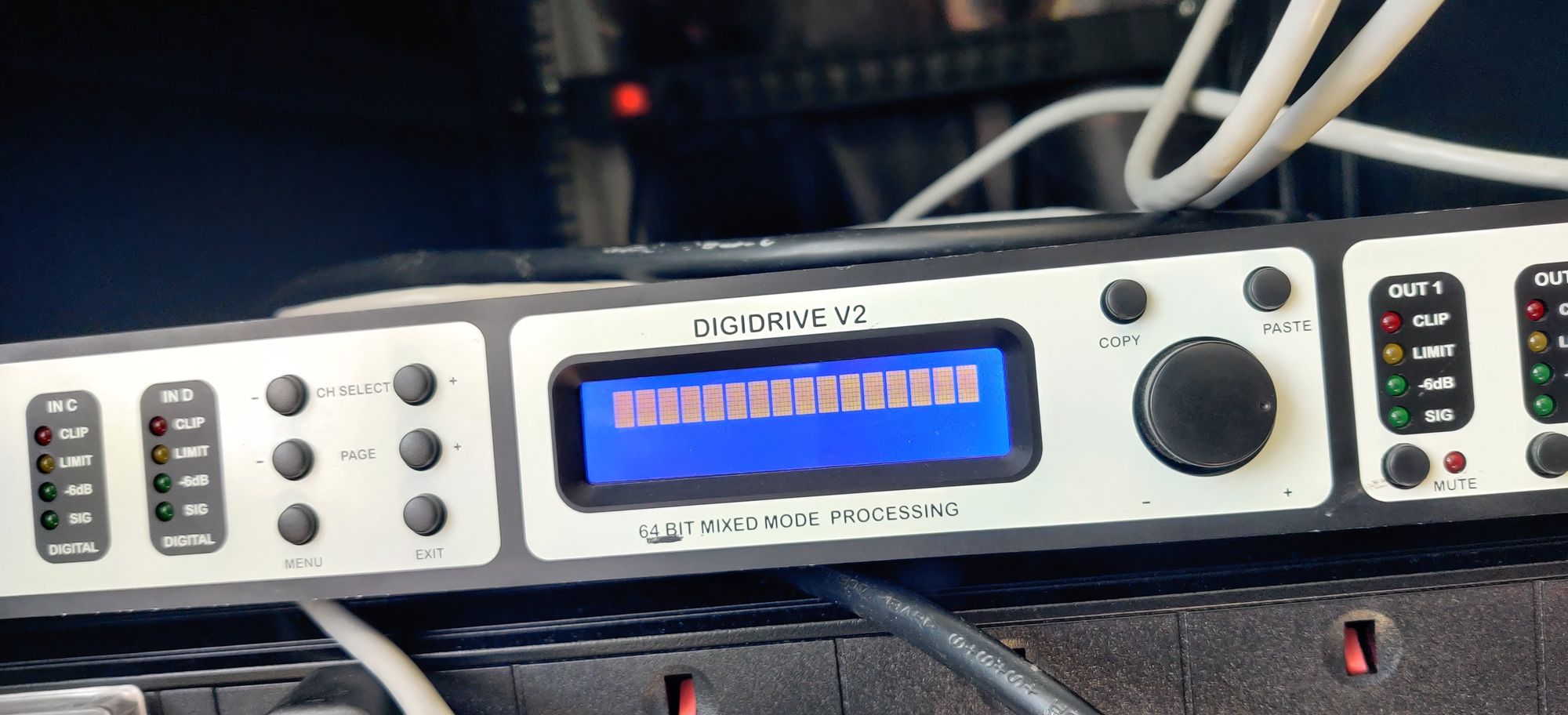Arguing with audio processors
There's quite a long chain of moving parts that takes sound from sources on stage through to the speakers. One of the last parts is the audio processor, or sometimes the crossover. At Hex, we use processors by Void, specifically the DigiDrive v2. They're great little boxes, taking 4 inputs (analog or AES) to 6 outputs, with a range of dynamics and EQ along the way. They also have an ethernet interface, so can be shoved in a rack and controlled remotely using appropriate software.
And that is where it gets fun. These processors have been discontinued for a while, so the software provided by Void hasn't been updated in years. As such, it no longer runs on newer hardware like the M1. The hardware inside the processor seems to be one of two varieties, Xilica or AllDSP. Ours are all AllDSP, which makes maintaining them a bit easier. AllDSP has a more recent version of the control software on their website, but it doesn't come with definitions for the Void processors. Those definitions can however be copied as-is out of the Void software, and into the AllDSP one.
We can't yet interact with the processors though, because the firmware that ours were running was too old for the latest version of the control software. Updating the firmware is where the biggest argument with this little box started.
When you ask the control software to update the firmware, one of the first things it does is erase the existing firmware. Sensible right? Except for when the next step of uploading the new firmware is ridiculously temperamental. The first time I tried it, I ended up with this screen:

Oops.
This particular processor now would do this every time it turned on, and wouldn't respond to any button presses or show up in the control software. I thought it had bricked itself. I got distracted by other things going on, so left it alone for a few days.
The USB connection on these devices presents itself as a USB serial port, so I thought it'd be worth a shot to see if it responded to anything over a serial terminal. It did, but no matter the baud rate, seemed to just spit out gibberish intertwined with 01:23:45:67:89:AB. Some default identifier maybe? I'm not sure.
But it seemed to be doing something, so I fired up the control software again, and surprise surprise, it showed up! Not as anything editable or configurable though, I assume because it still had a blank flash inside. It did let us attempt to update the firmware though, so off we go again. It took about 6 attempts of varying patterns of trying again, turning off and on, different USB ports, different cables etc, but eventually it hit 100% uploaded. It lived! I think I'll leave the other boxes on their current firmware for now.